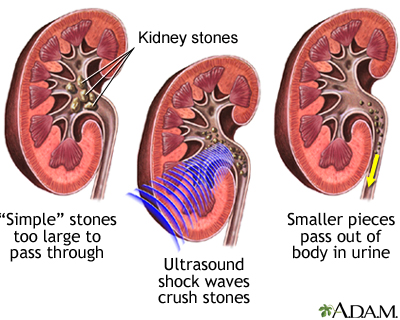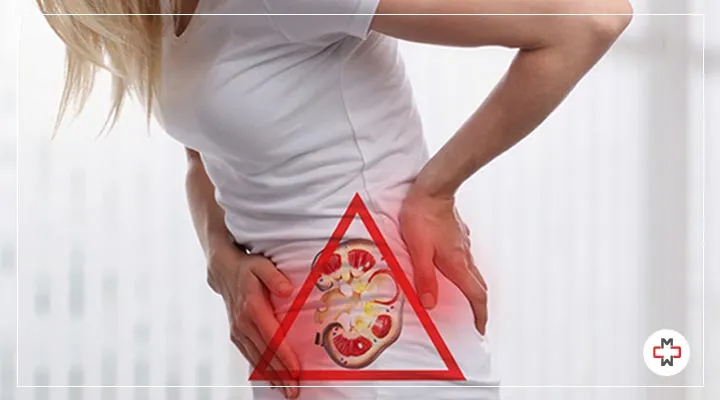Contrasting Kidney Stones vs UTI: What You Required to Find Out About Their Influence On Wellness
Contrasting Kidney Stones vs UTI: What You Required to Find Out About Their Influence On Wellness
Blog Article
A Comprehensive Analysis of Therapy Choices for Kidney Stones Versus Urinary System Tract Infections: What You Required to Know
While UTIs are commonly attended to with antibiotics that supply quick relief, the technique to kidney stones can differ considerably based on private aspects such as stone size and composition. Non-invasive methods like extracorporeal shock wave lithotripsy (ESWL) might be ideal for smaller sized stones, yet bigger or obstructive stones often require more intrusive methods.
Recognizing Kidney stones
Kidney stones are hard deposits formed in the kidneys from minerals and salts, and comprehending their composition and formation is important for reliable administration. The main kinds of kidney stones consist of calcium oxalate, calcium phosphate, struvite, uric acid, and cystine stones, each with distinct biochemical beginnings.
The development of kidney stones takes place when the focus of particular substances in the pee raises, resulting in condensation. This formation can be influenced by urinary pH, quantity, and the presence of inhibitors or marketers of stone development. Reduced urine quantity and high acidity are helpful to uric acid stone development.
Recognizing these elements is crucial for both avoidance and treatment (Kidney Stones vs UTI). Efficient administration techniques might consist of nutritional alterations, enhanced fluid intake, and, in many cases, pharmacological treatments. By acknowledging the underlying causes and sorts of kidney stones, health care providers can apply tailored strategies to reduce reoccurrence and enhance client results
Introduction of Urinary System Infections
Urinary tract infections (UTIs) prevail bacterial infections that can impact any kind of component of the urinary system, consisting of the kidneys, ureters, bladder, and urethra. The bulk of UTIs are caused by Escherichia coli (E. coli), a sort of microorganisms normally located in the intestines. Women are much more susceptible to UTIs than males as a result of anatomical distinctions, with a much shorter urethra assisting in less complicated microbial accessibility to the bladder.
Signs of UTIs can differ depending on the infection's area however usually include constant urination, a burning sensation throughout urination, strong-smelling or cloudy urine, and pelvic discomfort. In much more serious situations, specifically when the kidneys are involved, signs may also include fever, chills, and flank discomfort.
Risk aspects for creating UTIs include sex-related activity, particular kinds of birth control, urinary tract problems, and a weakened immune system. Trigger therapy is necessary to avoid difficulties, including kidney damage, and generally includes antibiotics customized to the certain bacteria included.
Treatment Options for Kidney stones

If the stones are bigger or create considerable discomfort, non-invasive procedures such as extracorporeal shock wave lithotripsy (ESWL) may learn the facts here now be utilized. This technique uses audio waves to damage the stones right into smaller sized fragments site web that can be much more conveniently travelled through the urinary tract.
In cases where stones are also huge for ESWL or if they obstruct the urinary tract, ureteroscopy might be suggested. This minimally invasive procedure involves making use of a small scope to break or get rid of up the stones directly.

Therapy Alternatives for UTIs
Exactly how can doctor successfully deal with urinary system tract infections (UTIs)? The primary technique entails a comprehensive evaluation of the individual's signs and case history, followed by ideal analysis screening, such as urinalysis and urine culture. These tests help recognize the original microorganisms and establish their antibiotic vulnerability, leading targeted therapy.
First-line treatment typically consists of prescription antibiotics, with choices such as nitrofurantoin or trimethoprim-sulfamethoxazole, depending upon regional resistance patterns. For straightforward situations, a short training course of prescription antibiotics (3-7 days) is typically enough. In recurring UTIs, carriers may consider preventative prescription antibiotics or different techniques, consisting of way of living modifications to lower danger elements.
For individuals with complex UTIs or those with underlying health and wellness concerns, more hostile treatment might be needed, potentially including intravenous antibiotics and additional diagnostic imaging to assess for problems. Furthermore, individual education on hydration, hygiene techniques, and symptom management plays an important role in avoidance and reappearance.
Comparing Results and Effectiveness
Assessing the end results and efficiency of treatment options for urinary system system infections (UTIs) is crucial for maximizing patient treatment. The main treatment for straightforward UTIs usually includes antibiotic therapy, with alternatives such as trimethoprim-sulfamethoxazole, fosfomycin, and nitrofurantoin. Studies suggest high effectiveness prices, with many people experiencing symptom alleviation within 48 to 72 hours. Antibiotic resistance is a growing problem, demanding cautious selection of anti-biotics based on local resistance patterns.
On the other hand, therapy end results for kidney stones vary considerably based on stone location, size, and composition. Alternatives vary from conservative monitoring, such as hydration and pain control, to interventional procedures like extracorporeal shock wave lithotripsy (ESWL) and ureteroscopy. While ESWL has a high success price for smaller stones, complications can emerge, demanding additional interventions.
Inevitably, the efficiency of treatments for both problems go to the website depends upon exact diagnosis and customized methods. While UTIs normally react well to prescription antibiotics, kidney stone administration might require a complex technique. Constant analysis of therapy end results is crucial to improve patient experiences and decrease reappearance rates for both UTIs and kidney stones.
Verdict
In recap, therapy methods for kidney stones and urinary system infections vary considerably due to the distinct nature of each condition. Non-invasive approaches such as extracorporeal shock wave lithotripsy are ideal for smaller sized stones, whereas larger or obstructive stones might need ureteroscopy.
While UTIs are usually resolved with antibiotics that provide rapid alleviation, the technique to kidney stones can differ considerably based on private aspects such as stone dimension and make-up. Non-invasive techniques like extracorporeal shock wave lithotripsy (ESWL) might be appropriate for smaller stones, yet bigger or obstructive stones frequently need even more invasive techniques. The main kinds of kidney stones include calcium oxalate, calcium phosphate, struvite, uric acid, and cystine stones, each with distinct biochemical beginnings.In contrast, therapy results for kidney stones differ dramatically based on stone size, structure, and area. Non-invasive approaches such as extracorporeal shock wave lithotripsy are suitable for smaller stones, whereas larger or obstructive stones might call for ureteroscopy.
Report this page